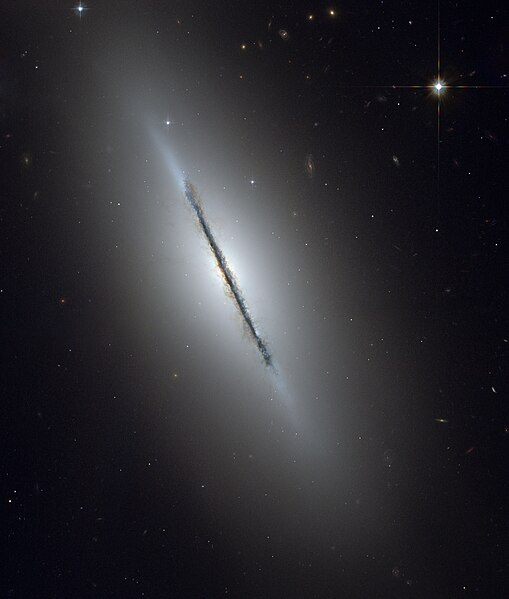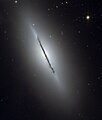ファイル:Ngc5866 hst big.jpg
表示

このプレビューのサイズ: 509 × 599 ピクセル。 その他の解像度: 204 × 240 ピクセル | 408 × 480 ピクセル | 652 × 768 ピクセル | 870 × 1,024 ピクセル | 1,739 × 2,048 ピクセル | 3,190 × 3,756 ピクセル。
元のファイル (3,190 × 3,756 ピクセル、ファイルサイズ: 11.45メガバイト、MIME タイプ: image/jpeg)
ファイルの履歴
過去の版のファイルを表示するには、その版の日時をクリックしてください。
| 日付と時刻 | サムネイル | 寸法 | 利用者 | コメント | |
|---|---|---|---|---|---|
| 現在の版 | 2009年7月29日 (水) 19:07 |  | 3,190 × 3,756 (11.45メガバイト) | Tryphon | Better quality, from http://imgsrc.hubblesite.org/hu/db/images/hs-2006-24-a-full_jpg.jpg. |
| 2009年2月16日 (月) 17:49 |  | 3,190 × 3,756 (879キロバイト) | Spencer | Much higher res | |
| 2007年3月26日 (月) 22:29 |  | 1,280 × 1,507 (1.38メガバイト) | Barfoo2 | == Summary == From original NASA press release: :This is a unique view of the disk galaxy NGC 5866 tilted nearly edge-on to our line-of-sight. Hubble's sharp vision reveals a crisp dust lane dividing the galaxy into two hal |
ファイルの使用状況
以下の 3 ページがこのファイルを使用しています:
グローバルなファイル使用状況
以下に挙げる他のウィキがこの画像を使っています:
- ast.wikipedia.org での使用状況
- be.wikipedia.org での使用状況
- ca.wikipedia.org での使用状況
- cs.wikipedia.org での使用状況
- de.wikipedia.org での使用状況
- el.wikipedia.org での使用状況
- en-two.iwiki.icu での使用状況
- en.wikibooks.org での使用状況
- eo.wikipedia.org での使用状況
- es.wikipedia.org での使用状況
- eu.wikipedia.org での使用状況
- fi.wikipedia.org での使用状況
- fr.wikipedia.org での使用状況
- Dragon (constellation)
- Galaxie
- Utilisateur:Itzcoalt
- Modèle:Utilisateur mystère
- Catégorie:Utilisateur Mystère
- Utilisateur:Patrinet/Galerie Utilisateur
- Utilisateur:Corle1nes
- Utilisateur:Célestin Moreau/Galaxies
- Utilisateur:Nicolas ANCEAU/Bibliothèque
- Utilisateur:Caro L
- Utilisateur:Viatcheslav
- Utilisateur:Silassouille
- Utilisateur:Chappa'ai7
- Utilisatrice:MamzellTopi
- he.wikipedia.org での使用状況
- hr.wikipedia.org での使用状況
- hu.wikipedia.org での使用状況
- hy.wikipedia.org での使用状況
- id.wikipedia.org での使用状況
- it.wikipedia.org での使用状況
- kk.wikipedia.org での使用状況
- ko.wikipedia.org での使用状況
- lb.wikipedia.org での使用状況
このファイルのグローバル使用状況を表示する。
